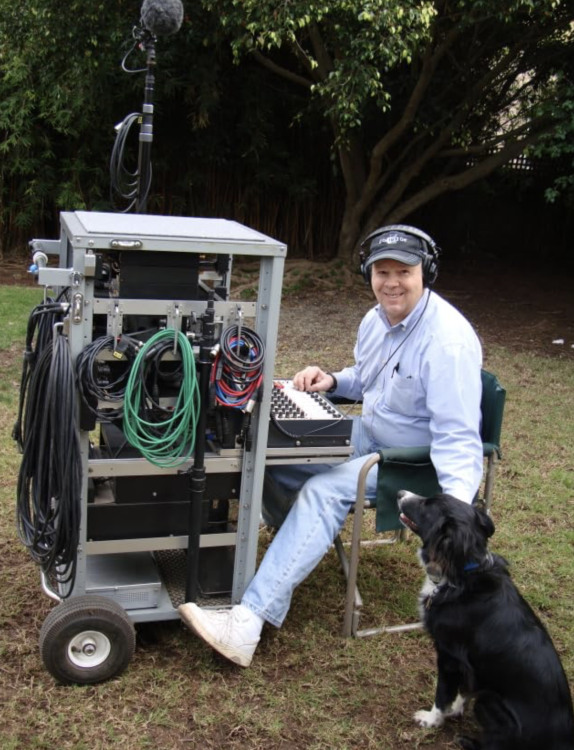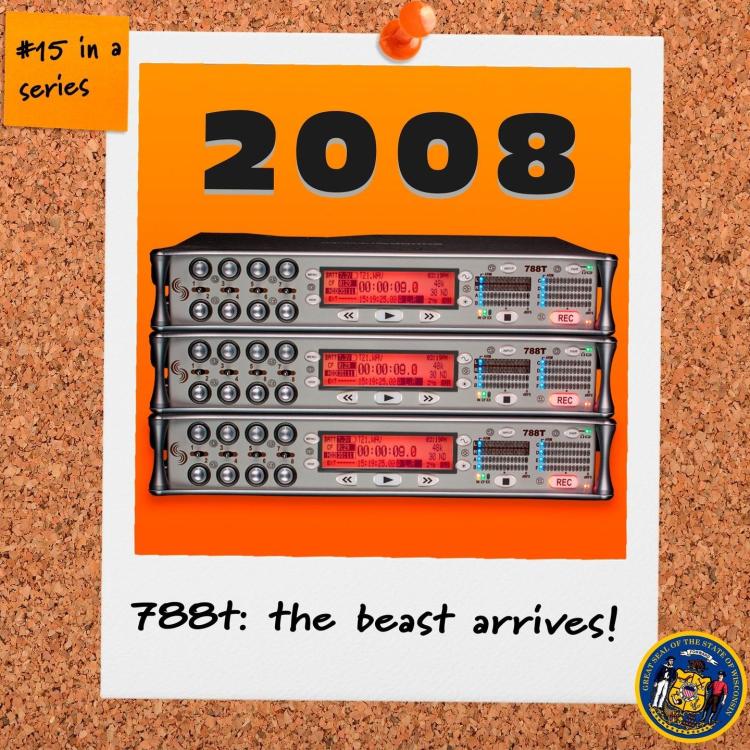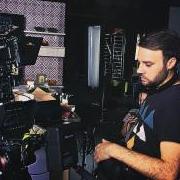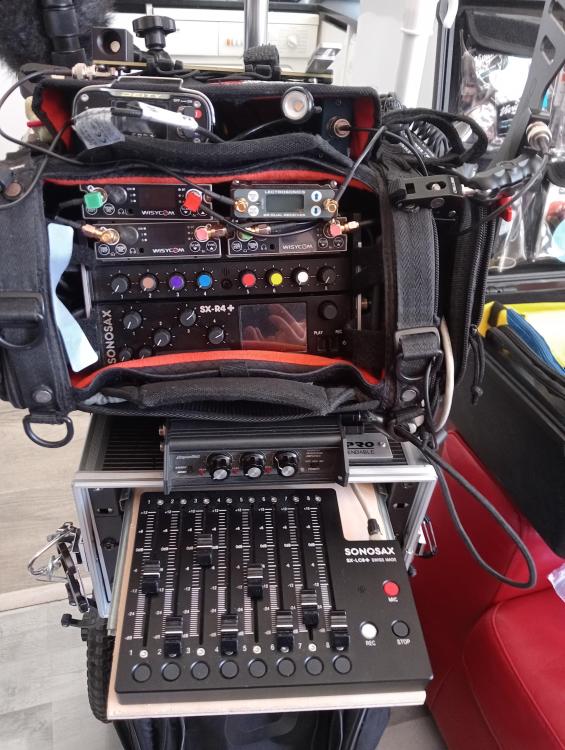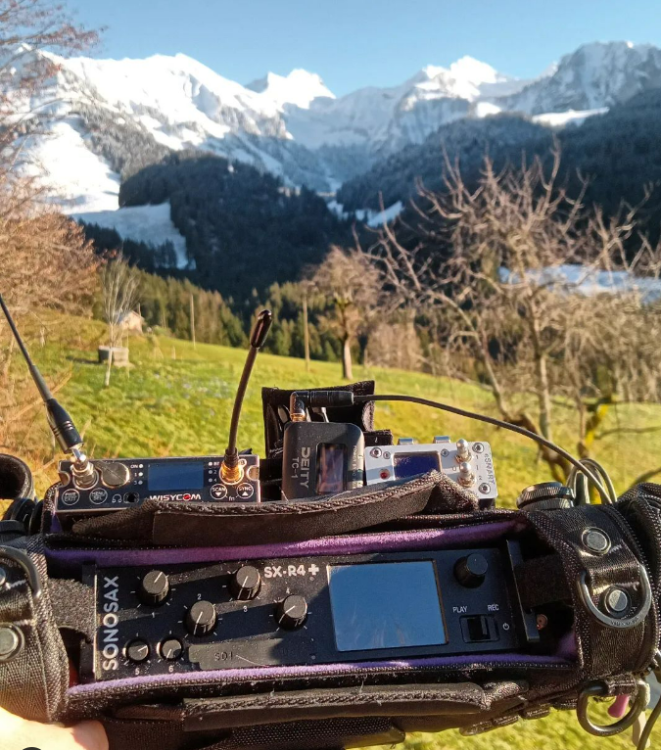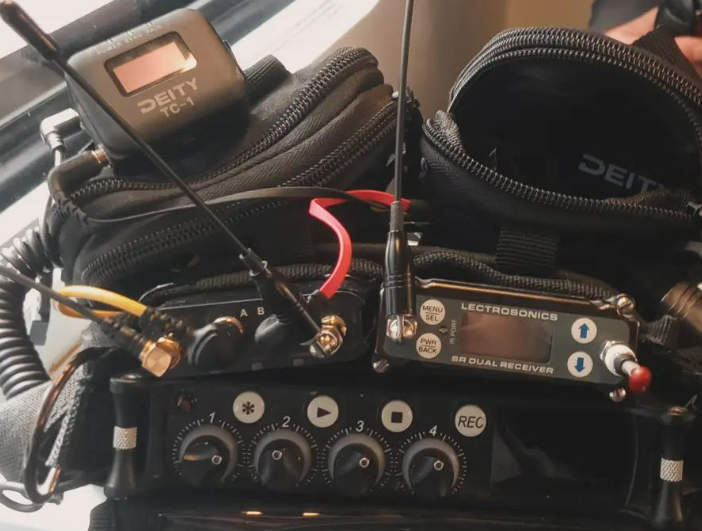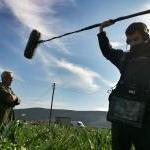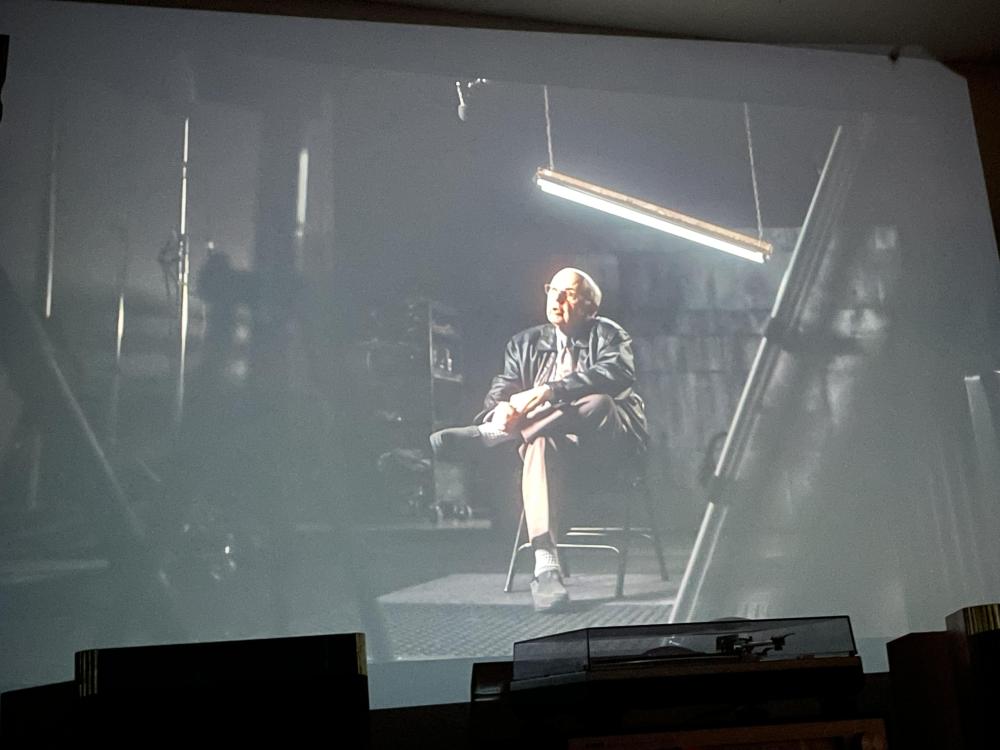Leaderboard
Popular Content
Showing most liked content since 03/24/2024 in all areas
-
I haven't managed to thank everyone personally but the last few days have seen an amazing amount of support donations from our members. Maybe my birthday, April 18th, triggered this, I don't know, but it is so appreciated! We have such a great group of sound people here who participate regularly on site and so many of our veteran members have generously offered so much good advice and help to many of our newer members. It is amazing that we can keep this all going considering how much "competition" there is from so many social media websites. I am aware that the legacy forum format is showing its age a bit but it seems to be still working quite well. So pleased that there is room in your lives for JWSOUNDGRIOUP. Thank you, again, from the bottom of my heart for all the generous support donations.4 likes
-
Today, Halter Technical began posting a series of Reels that I hope uplifts and inspires working professionals, and those who are building their career. New episodes of #RespectSound will appear on Mondays and Fridays on Facebook, Instagram, and YouTube. I hope you'll check them out! https://www.youtube.com/playlist?list=PLKnxJ6JEwFFU9_AtlyE1IYL8b_reDjV804 likes
-
I'm almost done with a windows version of the app that controls a single 788 via usb. Multiple unit control over USB is limited to basic CLink broadcast commands like roll and cut, but I currently have a way I could hook up the 788's CLink port to a router with a $50 RS232 to ethernet/wifi adapter so it could be discoverable by an iPad/Android Tablet and you could control multiple linked units with it. I don't currently have a Mac to write an iPad app on though. Once the Windows usb app is done, I can post it here as a basic test app for funtionality/bugs before writing the actual iOS/Android versions cause those would take a bit longer since I'd have to learn their platforms a bit more.3 likes
-
I think he means how the Easyrig has rigid hooks that hold the bag, so it is easy to take the bag on and off instead of unclipping 6 carabiners. I have always wanted something like this as well. I have both the Orca and Ktek waist belt and I find both of them super uncomfortable. Even the smallest bag, I found the mixer sat too low and kind of prevented me from being able to walk properly.3 likes
-
For those of us in the Lectro ecosystem: the digital successor to the SSM was just announced. https://www.gothamsound.com/product/dssm-digital-transmitter3 likes
-
The DSSM will be an excellent addition to my D2 wireless eco system. I too what would love remote control if TX’s . I’m betting that WMAS with its 6 MHz bandwidth will the be future for remote control for not only Lectro but all manufacturers in the next couple years and all those 2.4 ghz controlled systems will be outdated. And if/when we do see a WMAS compatible system with remote control Lectro’s track record shows that these D2 TX’s will most likely work with the next gen RX’s maximizing your investment.3 likes
-
I disagree heartily. Not to say that digital mics don't have a place, but you are writing as though the digital parts of the signal never fail. You aren't making the system less complex. You are simply moving the complexity into the microphones and requiring a whole bunch of functionality to be duplicated in every microphone instead of implementing it once in the recorder. That has pros and cons, and your post only really lists the pros. Pros: Shorter analogue path means less susceptibility to analogue distortions. Duplication of input signal circuitry provides redundancy: If it fails, only one microphone has failed, not the recorder. Less analogue circuitry in the recorder means less weight and power consumption in the recorder. Cons: Removes compatibility with analogue microphones and other devices and / or requires outboard pre-amps and A/D converters for every analogue device I need. Increases weight and power consumption in every microphone (meaning: a heavier boom and way less battery life for the boom Tx). Makes troubleshooting slower and more difficult because now there are more places where settings can be misconfigured, and more points of failure in the microphone. Using a wireless Tx for the boom introduces all the reliability issues of a wireless transmitter ... sure it's digital, but that doesn't avoid interference, drop-outs and battery issues. Longer digital path means more ways for digital transmission to go wrong. Practically speaking your approach locks you into a single microphone vendor. Schoeps is great, but it's not the correct choice in every situation. I want to be able to use specialized instrument mics, hydrophones, geophones, exotic pre-amps, and all the $100K+ of analogue accessories in my existing sound kit. I want to know I can easily patch into a house sound system, or plug in a microphone that someone has handed me as their "favourite mic". The CMD42 requires an order of magnitude more power than a phantom microphone. That means worse battery management for boom transmitters, or a significant increase in recorder power consumption if hardwired. I get less than 2 hours of runtime on my TRX745 when powering my AES42 SuperCMIT. That can work for a dramatic show where I have a boom op to baby-sit it, but it wouldn't work for long interviews. Your approach doesn't reduce power consumption for the whole system, it just moves it around. In my opinion, focussing on gear and signal-chain as a path to better audio only goes so far. In day-to-day operation, simplicity, resistance to user error, and ease-of-workflow have a greater effect on audio quality than keeping the analogue path as short as possible. The change you are suggesting trades workflow advantages for signal-chain advantages that are mostly minor or theoretical. These are the workflow disadvantages that I see: Eliminating analogue inputs hugely restricts my workflow by limiting which tools I can use. Access to the right tool for the situation is hugely important for keeping workflows simple. Pushing input processing into the microphone means I no longer have instant access to those settings in the recorder. I can't instantly see what settings are enabled, and to change them, I have to pull out a phone and get physically close to the mic (because settings are changed by dweedle tones). Yes, there are circumstances where the input processing really does need to be very early in the chain, but 95% of the time it doesn't matter and its easier, quicker, and more reliable to make the change at the recorder. Using a boom transmitter means another devices to manage batteries for, and the high power consumption of the CMD42 means I need to track this fairly closely. I can't just change batteries once a day at lunch. I can see a place for a recorder with all-digital inputs for simple jobs (say, an interview kit) where I could bring a single-purpose kit and know that the job will fit within the confines of that single purpose. But it couldn't be my only recorder ... I need a recorder with analogue inputs for a general purpose kit because of the flexibility it gives me. Maybe that will change in the future. If enough other manufacturers adopt digital, I'd feel less need to rely on analogue gear. If the recorder (in conjunction with the boom Tx) implements the AES control protocols well enough that I don't need to whip out my phone to adjust settings in the microphone, that would address my concern about putting those settings there. Maybe other manufacturers will produce digital PSUs that are less power hungry and the concerns about battery life go away. But right now, with the equipment and workflows that are available, I see far more downsides than upsides.2 likes
-
Sometimes I wonder how long this site will be active, and thank my lucky stars that I was able to get in early! Despite the like button, this is one of the greatest (and only) places I visit online. Thank you Jeff and thank you donators!2 likes
-
2 likes
-
I can't say enough good things about TXAdvance. I have been using it for 2 years. It is instrumental in scanning and finding clear frequencies, coordinating my 8 wireless transmitters and troubleshooting RF hits in LIVE active mode when some new RF source walks onto set. I have used several RF apps before using this one. For a location sound mixer there is simply no better product. I know several Apple device users who have purchased Android tablets just to use TXAdvance. Plus Grégoire is very responsive to feature suggestions. I highly recommend his app. In its current version it is very mature and feature packed.2 likes
-
We tried an earlier proto on a 17 page backwards walk and talk, it was great for that2 likes
-
Haven't tested the two against each other but I'm guessing it's by design. The advantage of the Lemo being lighter and more compact comes with the downside of less physical shock absorption and being more sensitive to physical impact (that's probably not how you would describe it scientifically). But cable noise is common even for XLR plugs. A really important feature of shockmounts is the isolation of the cable that is attached to the mic. If the mic itself is isolated from the boom or stand but not from the cable hanging or lying around then all handling noises will be transduced into the mic. So there's usually a short cable between the mic and another fixed XLR plug that isolates the mic from the rest of the cable length. Some shockmounts have a clip to attach a connected cable so if you're running only one cable you can clip it in shortly after the XLR plug to the microphone as some kind of strain relief. Alternatively, it should also help to fix the cable with some velcro to the stand. I'm afraid with sensitive mics and without a high-pass (low-cut) filter it's likely that you get some unwanted handling noise, even if the mic is static on a tripod. The table might even conduct the steps of the person walking in the next room. So a shockmount is always good advice and will safe you troubles. It doesn't have to be cinela but of course they're worth the money and have special mounts for the lemo version. Any other will do for table interviews.2 likes
-
2 likes
-
2 likes
-
2 likes
-
because WMAS is allowing bidirectional communication between transmitters and receivers, so in theory it can be used to control all the bodypack parameters2 likes
-
Just to be more specific At the end of the day, I give my card 1 to DIT or who’s in charge. When I'm back home or at the hotel, I make a back-up copy of card 2, and that's when I sort out and rename the wild tracks. I only send the folder with all the wild tracks at the end of the project, in one go.2 likes
-
And now I have just added part 3 of my MKH 8030 tests, probably a little more relevant here than part 2: in this case it is a series of MS tests with the MKH 8020, MKH 8040 and MKH 8050 - all field recordings/ambiences, not music. Cheers, Roland https://drbadphil.com/sennheiser-mkh-8030-part-3-mid-side-field-recordings2 likes
-
Before the topic changes completely, let me just chime in to agree with Constantin that AES42 is definitely more than just a passive interface for receiving digital audio signals. Unlike AES3 it has a control channel that runs from the interface to the microphone(s) (along the same set of wires, of course), and quite a few essential commands are predefined in the standard, such that all AES42-compatible microphones should implement them. Some other commands are "defined but optional." And there's also a range of command codes available for manufacturers to define for themselves however they want, so that unique features can be offered. What you can do in Mode 2 that you can't do in Mode 1: [a] record synchronously with any given timing signals, such as a master clock, without using sampling rate converters [b] run multiple microphones without sampling rate converters. In Mode 1 each mike is independently self-clocking, and no two are ever exactly alike.2 likes
-
There are real-world situations in which a digital microphone can offer an audibly lower noise floor than a comparable analog microphone. For years I used to think that digital microphones were just a rearrangement/refactoring of the same set of components (capsule, preamp, a/d converter) as in a digital recording setup with analog mikes, and yes, that is true for the most part. But the hitch is analog mike preamps (whether outboard or part of a mixer or recorder) and their noise levels and headroom in relation to their gain settings. Mike preamps, contrary to what some people apparently assume, are nearly all at their quietest when set to the upper range of their gain settings. If the sounds that you're recording include very high SPLs (even for brief intervals), you can't leave the gain of the preamp (or analog recorder or mixer input) set very high, or you'll clip the analog electronics. As a result, you have to set the gain for the loudest sound that you expect to pick up, which raises the noise floor for the quieter parts of whatever you're recording, compared to what that noise floor would have been at higher gain settings. Sometimes this raises the preamp's noise floor above that of the microphone or the recording environment. And that's a compromise that you don't have to make with digital microphones. As a result, every now and then people with real, professional experience find to their astonishment that digital microphones are quieter or even (as some have said) much quieter in certain recording scenarios than the comparable analog microphones had been for them before. I used to think those people were tripping--but now I realize that they could very well be describing their experience accurately, though perhaps not understanding that no, the microphones themselves aren't any quieter; it's the benefit of working without the occasional limitations of analog preamps. The effect isn't extremely common, but I think it's 100% real when it occurs. Does that explanation help? There's a video in German that Helmut Wittek from Schoeps posted on YouTube that goes into this; I could provide a breakdown of it in English if anybody wants. --best regards2 likes
-
Now that sounds sketchy to me. Yes sound is pivotal, but calling it that as part of the hiring process screams fake to me. Come to think of it, the whole thing looks like it's written by ChatGPT to me. Lots of words that say nothing.2 likes
-
Sunday, March 24 at noon Mountain Time (UTC -6) This will also be available afterward. Link:2 likes
-
2 likes
-
There's always the Nagra Seven. Which also doubles up functionality, but at least its preamps are better than a Zoom. I'm not totally sure what you mean by USB-centred audio recorder. You mean a recorder that accepts a USB interface as an input? I don't think it exists ... there's no reason to make one when a phone or a laptop can do the job just as easily (with no difference in quality, and probably a minimal difference in convenience). If your audio signal is already on a USB bus, a laptop is the correct tool for the job. Outside of that, I assume the main reason to use the M2D2 is for its preamps, so if you want to use the analogue or AES outputs on the M2D2, any of the usual recorders should work just fine, Zoom, Mixpre, or a top-tier production recorder. I guess I'm really not clear why you want a special recorder just for the M2D2. If you just want the Sonosax pre-amps, plug it into whatever recorder you have. If you want to use the USB output, plug it into a laptop or phone. And if you want a recorder with pre-amps, get a decent recorder and don't use the M2D2 at all. If you really want Sonosax pre-amps with an integrated recorder ... sell the M2D2 and buy an SX-R4+.1 like
-
I just liked the way the mixer bag hung off of the hooks. Imagine a thick belt or girdle you wear around your hips, and you'd hang the bag on that instead of having straps over your shoulders, so no harness per se. I don't know if it'd actually work but it seems like a nice solution. I think I'd buy it1 like
-
Does your boom pole have an internal cable? Simply bypass the boom cable with a temp 12ft cable wrapped around the exterior of the pole and see if the problem goes away. I have to resolder the wee wires at the base connector of my K-tek pole occasionally for this very reason.1 like
-
The HDM digital mode has good performance with only 2mW! But they do state it's something to be used in more controlled environments and with slightly reduced frequency response (20Hz-16kHz). Walk test in this video yields good results https://www.youtube.com/watch?v=phjOWKIKwzQ&t=320s&pp=ygUVbGVjdHJvc29uaWNzIGhkbSBtb2Rl1 like
-
Hmm, while decent ribbon mics offer something different to the MKH 8030, I'd certainly far rather use the latter plus other MKH 8000 series mics for MS than a VP-88, which I have heard: not knocking the Shure, but the Sennheisers are a significant step up (which isn't surprising, given price difference).1 like
-
1 like
-
I offer MS for docs here and people don't know what I'm offering. But I keep trying. I agree, I like the realism it can add ... though sometimes you just need the isolation of a shotgun.1 like
-
last feature bag when it's sitting on the cart : 16 channels (LR mix + 14 ISO channels) sonosax R4+ sonosax RX8 slot with 2 wisycom MCR54 with AES module 1 wisycom MCR54 receiver on analog channel 1-4, 1 lectrosonics SRC receiver on line 5-6 betso bowties ; lectro SNA600 ; RF venue diversity fin sonosax LC8 fader surface might be around 10 kg ----- documentary bag : sonosax R4+ with a mcr 54 on analog 3-4-5-6 MS boom cabled on 1-2, using sonosax preamp and ADC less than 5 kg ---- and last but not least "the feather rig" : SD mixpre6 mkII with automix and noise assist plugin since v9 we can use TC on the stereo aux input and still have a additional audio channel available. only problem is the lack of fader. MS cabled boom on channel 1-2 lectrosonics SRC receiver on 3-4 if needed i use the deity theos on aux input 5-6 (after jamming internal TC and changing the inputs) 2.5 kg1 like
-
What does WMAS have to do with a control scheme? I mean, I get that wider bandwidth allows more to happen, but it's ultimately just a licensing scheme for wider bandwidth channels. And control takes virtually no bandwidth, so I don't see why WMAS would open up possibilities there. What am I missing?1 like
-
Another advantage to digital mics is longer cable runs without signal degradation, although that is not all that relevant for us here. I found the combination of the Zax 743 with a SuperCMIT to be very noisy, so I am really curious how this will sound with the CMD42. It actually does include a control protocol, too. As Schoeps said, there is an LED to show the mic is on and I seem to remember that this LED on the Neumann digital mics could turn red when recording - but I may be terribly misremembering this. I do have the Neumann DMI-2 which was the control and power interface for Neumann digital mics. With a computer connected you could manipulate all kinds of settings, such as limiter, compressor, name and so on. This could be done live. I don’t know if newer versions of this could achieve any of this without the computer attached. What exactly would the be able to do in mode 2?1 like
-
FYI, the store is called "Hieber-Lindberg" and "Instrumente-Noten" refers to Instruments and sheet music. I remember the Lindberg mail-order catalogues from my youth. I assume this is that company.1 like
-
That's correct. In my POV, the last part of boompole (or the first one) I don't count it, because will exist anyways. 😁1 like
-
Yeah, the Pianissimo fur is seriously thick. I mostly just use the skin without the fur unless it is seriously windy. Didn't know about the Bubblebee fur ... I'll have to look for that.1 like
-
It’s fine. Not as simple as using a Rycote but there’s no comparison with wind and shock mount performance. The pianissimo has gotten easier to use than the older piano since they did away with the annoying rubber O-rings that were used to hold the thing together I hated those o-rings and most of them are lost now.1 like
-
You can find all the latest firmware and documentations at www.cantarx.com . There is also a "Cantar X3 User Group" at facebook with all documentations and repair guides.1 like
-
1 like
-
Vac cleaners use high power slip rings and are kind of crude for a mic signal and difficult to isolate from EMI. Their systems are quite big, for longer and thicker cables. Some even only have 2 "channels". The better ones come with constant torque springs rather than power springs. Over all, they are not made to be taken apart and I have given up attempts to harvest them from old units before. A DYH-1703 may have the right dimension, though also not small and the breaking system would probably need some modification to be quite. I do not have or have used one. I do use a DYH-1816 without the break on the boom but 3m max is probably too less for a bag to boom scenario.1 like
-
Didn't know about these but there's also "The Cable Binders" by Bubblebee. Seems to be the same thing and might be found at the same store you buy or rent your audio gear. At least that's how I stumbled across them.1 like
-
I'd tell them to pound sand then. What's next, you need to pay them for the catering too? If production doesn't want liability, then they shouldn't be creating a production.1 like
-
OMG...so annoyed. After both of your responses on a lark, I did a web search for best pitch & time shift plugins and Izotope was one of the first hits. 🤦♂️. Pulled up the alt playlist with the original audio, applied the "Variable Pitch" tool, and the results were night and day. Was sitting in my toolbox the whole time. Thank you for the extra brain that I evidently needed. Cheers.1 like
-
1 like
-
A bit of a departure from the usual shenanigans. I’m watching this Netflix true crime show, and all the interview segments are framing so wide that they literally have lights visible for most of the time, but still see fit to have the boom so high above the subject that it would basically be useless. I’m sure that the sound mixer objected at this clearly aesthetic choice on the part of production, but seriously, the fact that these interviews only use seconds at a time of the video portions, they really should prioritize the boom. It just makes my mind explode that someone would hinge the quality of their production on such a trivial aesthetic. 🤯1 like
-
1 like
-
1 like
-
I suffered the same issue for several months. Other fails would include the unit locking up and/or going into update mode. Lots of messing about, replacing aux usb power cables, etc, etc. -- Nothing worked. I replaced the USB cable from the 688 to the CL12 and the problem is solved. No more need for the aux power input, no more weird errors, no more shutdowns or lock-ups. I suggest replacing the factory USB cable with a good quality cable first, and seeing what shakes loose.1 like
-
From my experience withe the CSS-5 in the mono shotgun mode it's a wide cardioide with no reach and very handling sensitive. For 5.1 work I bought I bought a Soundfield SPS-200 In post you can adjust many things using their plug-in software mike sps200-manual.pdf1 like

.png.279748a58a2b862b7aa5f3b84126e232.png)
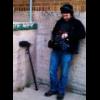




.jpg.60deb0716219777743dadbbc5c367e0c.thumb.jpg.1c9a3a88e16c9817f9ba0b039743d08a.jpg)


